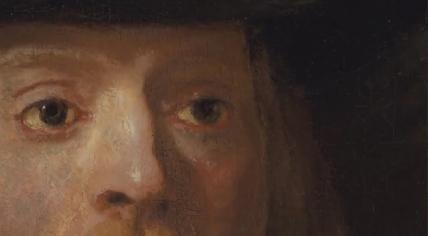
Rijksmuseum claims new, ultra-detailed Night Watch photo is the world’s largest
The Rijksmuseum in Amsterdam has succeeded in taking a new photo of Rembrandt’s The Night Watch that is so sharp that even the smallest detail can be seen. The “ultra high resolution” photo will be published on Monday so the museum’s website users can carefully examine the prized artwork.
The mastermind behind the project is Rob Erdmann, the senior scientist at the Rijksmuseum. He said he is very proud of the photography project, and explained that the ultra-high resolution process created a "virtual, always available microscope", with which researchers and the public can view and study every tiny detail of The Night Watch at any time, and even with multiple people at the same time. "We can see every particle of pigment and every brushstroke. We can see paint that Rembrandt did not perfectly mix on his palette. We can look into a crack and see the layers of paint in it. It's like trekking into the Grand Canyon and seeing the geological layers."
The composite photo actually consists of 8,439 photos taken at a distance of 13 centimeters from the painting, which measures 363 by 437 centimeters. A laser sensor determined the exact distance from the canvas for each photo. The large digital photo is a 717 gigapixel image, or roughly 717 billion pixels. Erdmann said it set a new world record. “We've gone from 'not enough data' to a veritable deluge of data," he stated.
The Night Watch, closer than ever! With our extremely detailed, 717 gigapixel, photograph of Rembrandt's Night Watch it is now possible to zoom in even further on minute, pin-sharp particles of pigment in The Night Watch. ✨
— Rijksmuseum (@rijksmuseum) January 3, 2022
➡️ https://t.co/SQT1dDMLVt
Proud partner: #AkzoNobel pic.twitter.com/e1eNdX8wOd
With special technology for which he wrote the software himself, the photos are stitched together without visible transitions. That was an automated process, giving users "a scientific rendering of a material object that shows how well Rembrandt could manipulate paint.” The colors seen in the photo are the "true colours" of the painting.
The whole project took two years of technical planning, followed by two months of photography work, and six months to stitch all the photos together into one image. The scientist called it “the first of its kind in the whole world,” with the final product being the largest and most detailed photograph of a work of art ever taken. Other museums have already shown interest in similar projects, Erdmann said, such as the Metropolitan in New York and the National Gallery in London.
The Rijksmuseum is still engaged in Operation Night Watch, a long period of research and restoration. The second phase of the project will start on January 19, when the canvas is stretched on a new aluminum stretcher. This is necessary because there are ripples in the top left corner.
Reporting by ANP
